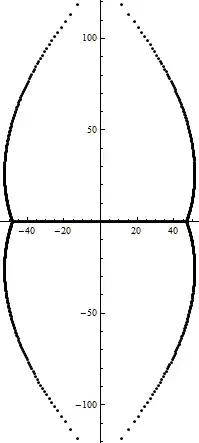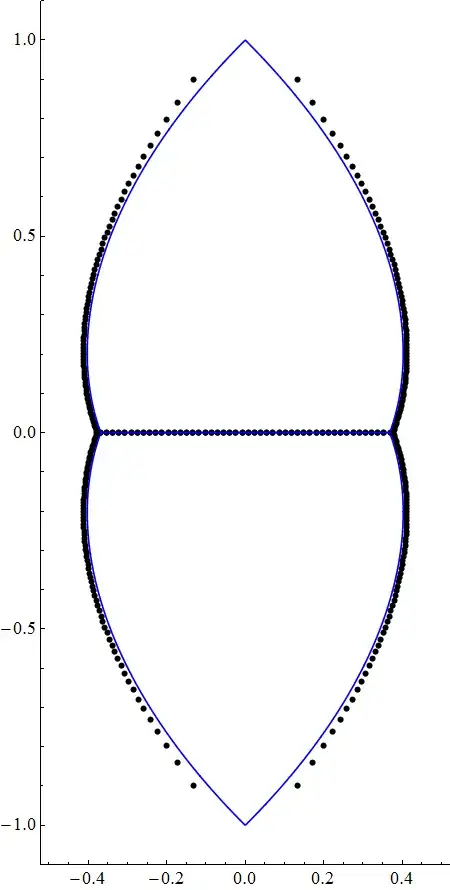Faulhaber polynomial of order $p \in \Bbb{N}$ is defined as the unique polynomial of degree $p+1$ satisfying
$$ S_{p}(n) = \sum_{k=1}^{n} k^p $$
for $n = 1, 2, 3, \cdots$. For example,
\begin{align*} S_0(x) &= x, \\ S_1(x) &= \frac{x(x+1)}{2}, \\ S_2(x) &= \frac{x(x+1)(2x+1)}{6}, \\ S_3(x) &= \frac{x^2 (x+1)^2}{4}. \end{align*}
In order to grasp some intuition on the partial decomposition of $1/S_p (x)$, I tried plotting the complex zeros of $S_p (x)$. The following graphics shows the distribution of the zeros of $S_{800}(x)$.

(The precision of the calculated zeros $z_j$ of $S_{800}(z)$ above satisfy $|f(z_j)| \leq 10^{-300}$.)
It turns out that they exhibits a very neat, yet still a strange pattern as seen above.
So far I have never heard of the topic related to this pattern, and I want to know (out of curiosity) if there are some results concerning the pattern of zeros of $S_p(x)$.
